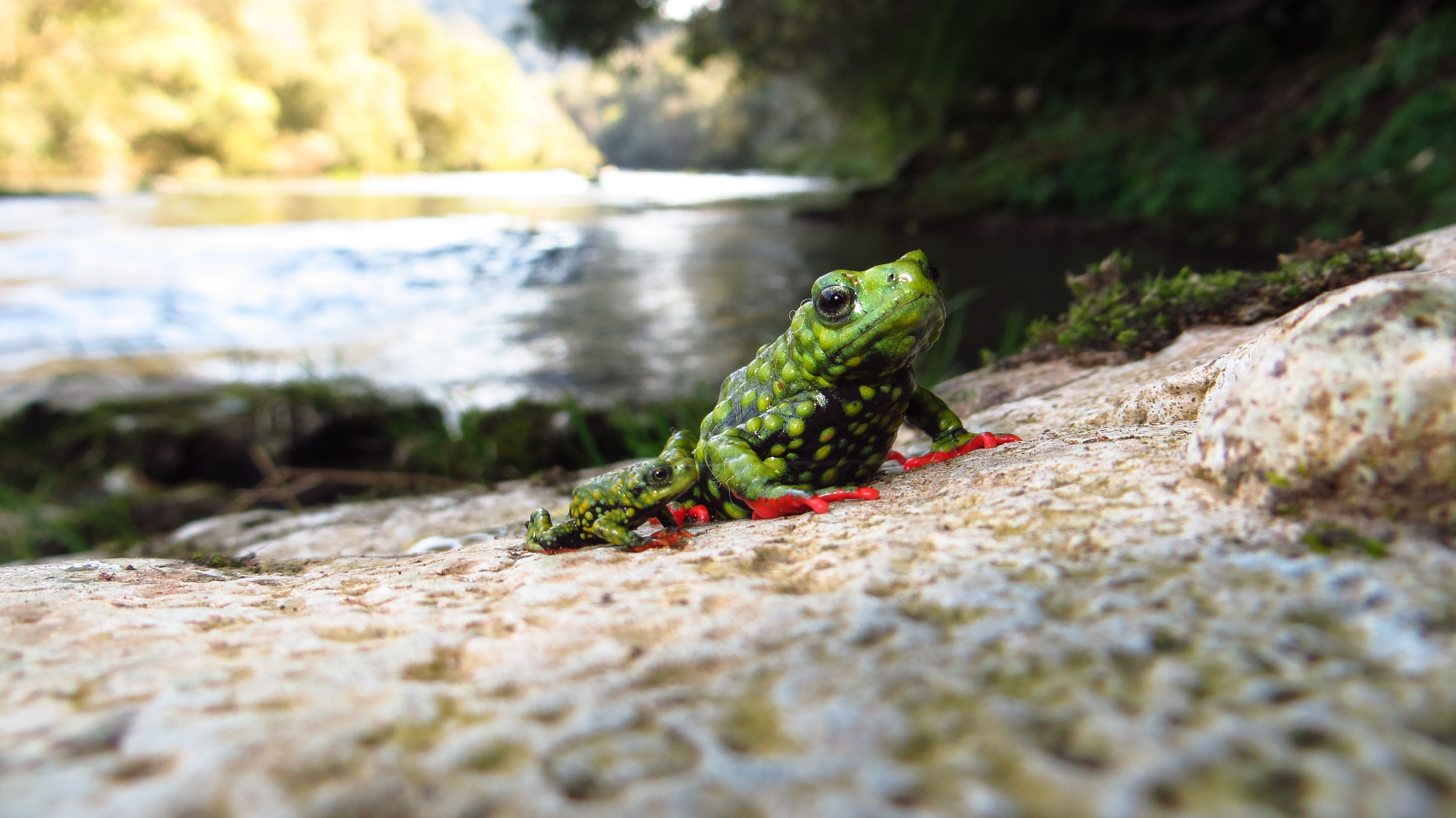By Luis Fernando Marin da Fonte, Amphibian Survival Alliance
The Rio Forqueta Key Biodiversity Area is part of one of the few, yet largest, Brazilian Atlantic Forest frag- ments in the extreme south of Brazil. The entire single known population of a microendemic and Critically Endangered amphibian species (Admirable Red-Belly Toad, Melanophryniscus admirabilis) is confined to this area. The species occurs only along a few hundred meters of the Rio Forqueta river, occupying its forested margins with rocky outcrops. The area is surrounded by a heavily deforested agroindustrial landscape. Regional forest cover is under pressure from the expansion of eucalyptus, tobacco, soybean and livestock farming. A nearby tourist facility and upstream pesticide use expose the site to direct and indirect human threats.
Until 2014, there was also a plan to build a small hydroelectric power plant in the site. Joint efforts be- tween academia, government, and non-governmental organizations have succeeded in stopping the construction of the power plant, showing that multi-institutional and collaborative work is essential when dealing with conservation. The Federal University of Rio Grande do Sul and ASA partner NGO Instituto Curicaca were instrumental in this process. This was the first time in Brazilian history that an amphibian prevented the construction of such a big enterprise.
“The Admirable Red-Belly Toad case is an excellent example of how habitat conservation can help to reduce the threats to a species. The existence of a microendemic species reinforces the importance of preserving the area where it occurs. If you protect one, you are also protecting the other”, says Michelle Abadie, a Brazilian conservationist and expert on this species.
Because of her work, Michelle was awarded a Future Leader of Amphibian Conversation award by the ASA in 2020.

